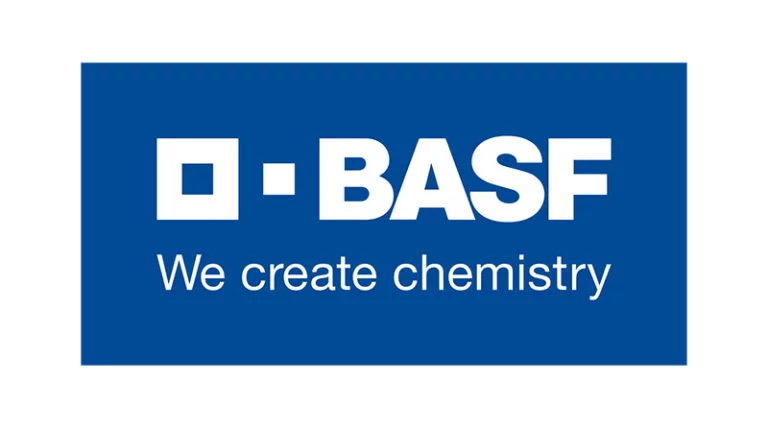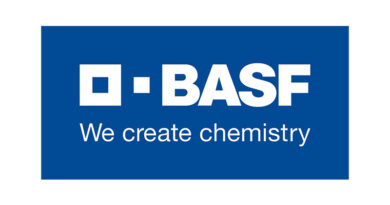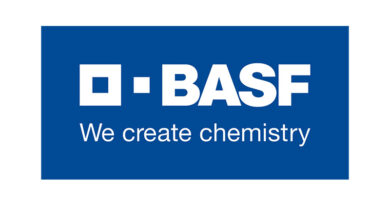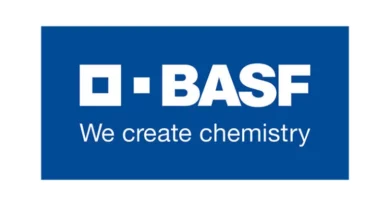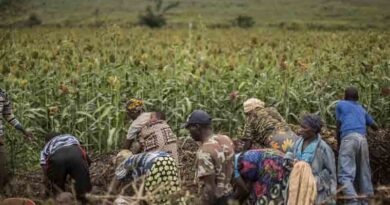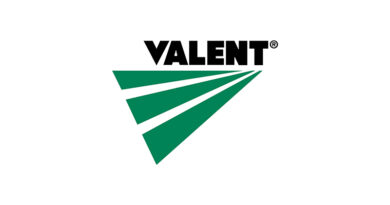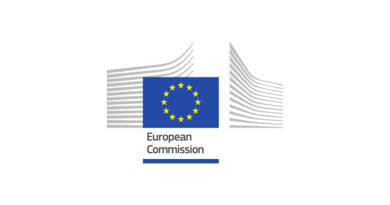BASF presents innovative products and technologies for a wide variety of industries
- TripleS method transparently evaluates the sustainability of product portfolio
- Sales generated with products launched on the market in the past five years that stem from R&D activities increased in 2022 to around €12 billion
04 December 2023, US: “Chemistry and sustainability are a perfect match – as BASF has recognized for a long time. As the world’s leading chemical company, we provide innovative solutions that make an important contribution to supporting the sustainable transformation of society and the optimal use of limited resources,” said Dr. Melanie Maas-Brunner, member of the Board of Executive Directors and Chief Technology Officer of BASF, at the company’s Research Press Conference held today. Maas-Brunner and BASF’s technology experts highlighted current innovation projects as concrete examples of this contribution.
BASF continuously develops new and even more sustainable products and technologies. “This is possible thanks to our unique innovation power, the success of which is evident in numerous indicators,” Maas-Brunner said. In recent years, the company has continuously increased its sales generated with products launched on the market in the past five years that stemmed from R&D activities; they rose to around €12 billion in 2022. This innovation power is also reflected in the more than 1,000 patent applications filed last year, making BASF a leader in the industry once again. “I am particularly happy that 40 percent of these patents are inventions with a particular focus on sustainability and a further 20 percent are related to digitalization,” said Maas-Brunner. Around 10,000 employees in research and development worldwide have contributed to these successes. “As Chief Technology Officer, I am very proud of this highly qualified research and development team.” One current research project that Maas-Brunner discussed in detail was the development of materials that significantly enhance the efficiency of water electrolysis. Water electrolysis is used to produce CO2-free hydrogen that is essential for the transformation of the chemical industry.
Making sustainability transparent
To support its customers on the journey to greater sustainability, the company co-developed an internationally recognized method that it uses to continuously evaluate its product portfolio: Sustainable Solution Steering, also known as TripleS. With this evaluation method, BASF analyzes the sustainability contribution of its products and classifies them in five categories: Pioneer, Contributor, Standard, Monitored and Challenged. If products are found to have a considerable deficit in terms of sustainability (Challenged), BASF takes them off the market within five years. In 2023, BASF launched a revised TripleS method that will make its product portfolio even more aligned with climate protection, resource efficiency and the circular economy. The BASF Report 2023, which will be published on February 23, 2024, will specify the proportion of sales generated in each of these five categories. The company will set a new goal for the share of sales to be generated with products in the two highest categories (Pioneer and Contributor). “With TripleS we are transparently measuring the sustainability of our activities and how we are improving,” said Maas-Brunner.
With examples of five innovative products and technologies, BASF experts demonstrated how customers from a variety of industries can better reach their sustainability goals.
Building better roads
Roads worldwide are subject to intensifying stress, including increased heavy-duty traffic and more extreme climate conditions. As a result, roads usually need to be replaced after 10 to 12 years. With B2Last® (Bitumen to Last), BASF has developed an innovative bitumen additive that improves the durability of roads and reduces the carbon footprint during construction.
The additive – a reactive system based on isocyanates – cross-links the individual components of bitumen to create a polymeric network. This improves the elastic properties of the bitumen, giving the road longer durability and improved crack resistance – at high as well as low temperatures. BASF has been able to confirm this in extensive tests carried out with academic partners. Use of the new additive also leads to a 65 percent reduction in bitumen emissions during road construction because the paving can be done at lower temperatures. In addition, the BASF additive contributes to reducing CO2 emissions because roads need to be paved less often and because less energy is required during production and paving. Moreover, the use of B2Last enables a larger proportion of reclaimed asphalt (recycled asphalt) to be added to the asphalt mixture. This reduces the total amount of energy, resources and CO2 emissions that would be associated with the production of new asphalt mixture.
Flying with improved aerodynamics
When an airplane has lower friction resistance in the air, its fuel consumption and therefore its CO2 emissions also decrease. Since the 1980s, researchers have been looking for solutions to reduce aerodynamic drag. Inspiration can also be found in nature: the skin of a shark, for example, which has tiny ridges on its surface that reduce drag when the shark swims through water. Now researchers from BASF and Lufthansa Technik have achieved a breakthrough with the development of NovaFlex SharkSkin. This functional film reduces drag on surfaces, is UV-resistant and can withstand rapid temperature changes and mechanical stress.
The innovative surface film – covered with 50-micrometer-high riblets – is being applied to Lufthansa Cargo’s entire 777F freight fleet as well as all Boeing 777-300ER passenger airplanes flown by SWISS International Air Lines. Applying NovaFlex SharkSkin to the flow-related parts of the aircraft reduces the aerodynamic drag by 1.1 percent. This then saves around 400 metric tons of kerosene and roughly 1,250 metric tons of CO2 per aircraft per year (for a Boeing 777-300ER passenger airplane). In the future, the body of the planes will be covered even more extensively with NovaFlex SharkSkin, which will reduce aerodynamic drag by 3 percent. In addition, BASF is further developing this functional film for other industrial applications: The surface film can make electricity production more efficient when applied to wind turbine rotor blades and reduce fuel consumption when applied to ship hulls.
Bringing cosmetics to life
Numerous different bacteria live on human skin and are important for the health of our largest organ. Until now, however, not much was known about their exact function. A study conducted by BASF researchers has now shown that Lactobacillus crispatus bacteria are very abundant on the skin of younger people around their eyes but are not found inside the wrinkles of older people. In vitro studies demonstrated that these live bacteria stimulate the production of collagen in skin cells.
Based on these findings, BASF developed Probiolift®. It is the first cosmetic active ingredient that contains a living probiotic – Lactobacillus crispatus bacteria – found on human skin. The effectiveness was tested in a randomized double-blind clinical study. It verified that the active ingredient contributed to a significant increase of the volunteers’ skin density and to a reduction of their forehead wrinkles. Probiolift is produced by a special fermentation process that is particularly energy efficient. The process is particularly sustainable because BASF also uses the fermentation supernatant to produce a second active ingredient: Postbiolift®. This contains the metabolites produced by Lactobacillus crispatus. Postbiolift helps to improve skin elasticity and reduce the appearance of wrinkles around the eyes.
Protecting crops more precisely
Weeds on agricultural land can lead to crop losses of 30 percent or more. Farmers usually control weeds by spraying the entire field with herbicides at a standard dose rate. To enable more precise and sustainable weed control, BASF and Bosch developed ONE SMART SPRAY in a joint venture.
ONE SMART SPRAY is an innovative, integrated hardware and software solution. Using BASF’s digital agronomic platform xarvio®, it offers real-time automated weed detection and treatment in row crops. Through the development process the product research team created an additional dedicated software module with unique weed detection threshold logic, including weed-control recommendations. Bosch complements the technology with high-tech cameras, sensors and algorithms for plant and weed detection. This provides farmers with a customized herbicide application strategy for the best timing, product and dosing.
In the past few years, BASF and Bosch have tested ONE SMART SPRAY with farmers in North America, South America and Europe, developing a precision tool. It can economically and ecologically control more than 650 weed types in the cultivation of soybeans, sunflower, cotton, corn and canola. When crop sprayers equipped with ONE SMART SPRAY are used in the field, the technology collects and processes more than one million data points per hectare. In milliseconds it detects whether a weed is present, and spot applies herbicide only where it is needed. Depending on growing conditions and weed pressure, it can result in herbicide volume savings of two-thirds or more.
Driving battery materials into the future
Electric vehicles charged with green electricity do not produce any emissions when they are driven. However, manufacturing these vehicles is resource-intensive, as is the production of the cathode active materials (CAM) that are needed for their batteries. BASF therefore aims to significantly reduce the environmental footprint of its battery materials throughout the entire value chain. The focus is on three areas: the CAM itself, the production process and the recycling of battery materials from end-of-life batteries.
Innovative cathode active materials are a key determinant of the performance, safety and cost of modern lithium-ion batteries in electric vehicles. In its R&D, BASF has numerous methods that have a decisive influence on the properties of battery materials. These include the composition of the materials, various particle sizes and distributions, and adjustments to porosity and surface properties. The company is therefore able to cater to individual customer needs.
BASF researchers also use a sophisticated production process for cathode active materials to reduce the amount of expensive raw materials, such as nickel and cobalt, without negatively affecting the battery’s performance. In addition, BASF continuously works to improve the energy and resource efficiency of the individual process steps and relies on energy from renewable sources.
An important lever for making battery materials more sustainable is the increased use of recycled metals, such as lithium, nickel, cobalt and manganese. Improving the yield of these metals in recycling processes while reducing the use of chemicals is another focus area of BASF’s battery materials research.
(For Latest Agriculture News & Updates, follow Krishak Jagat on Google News)

